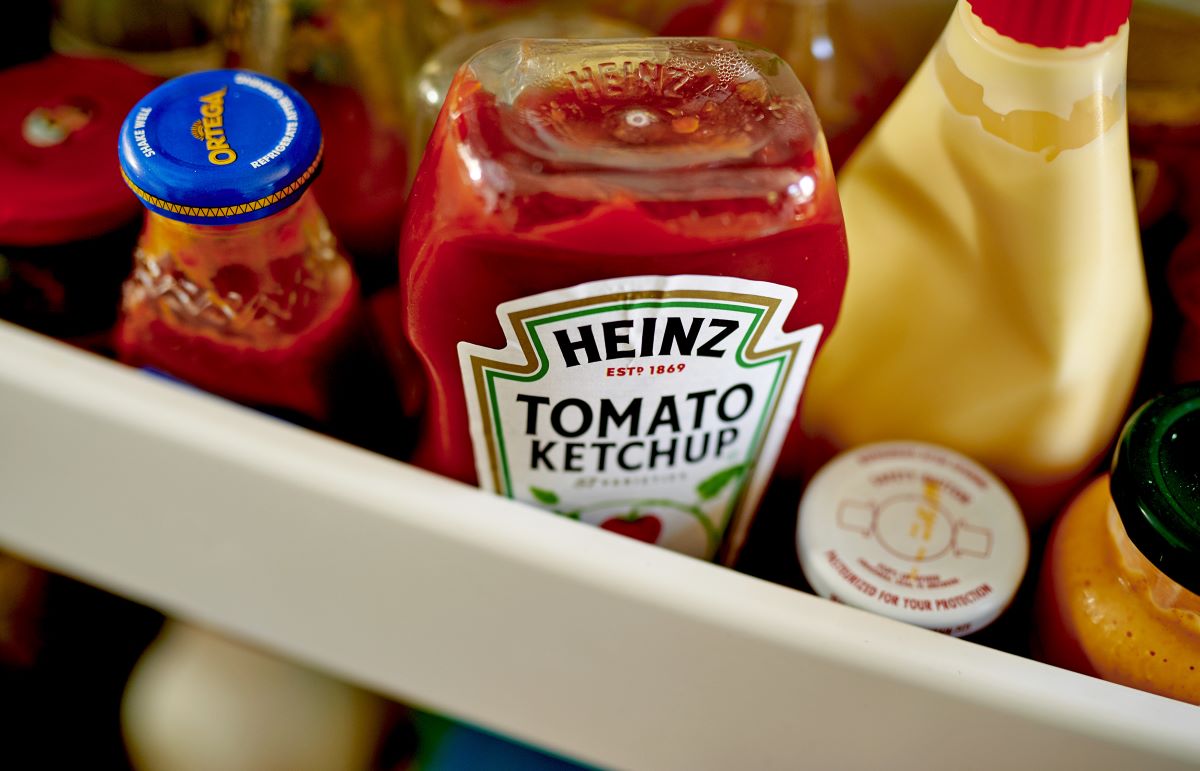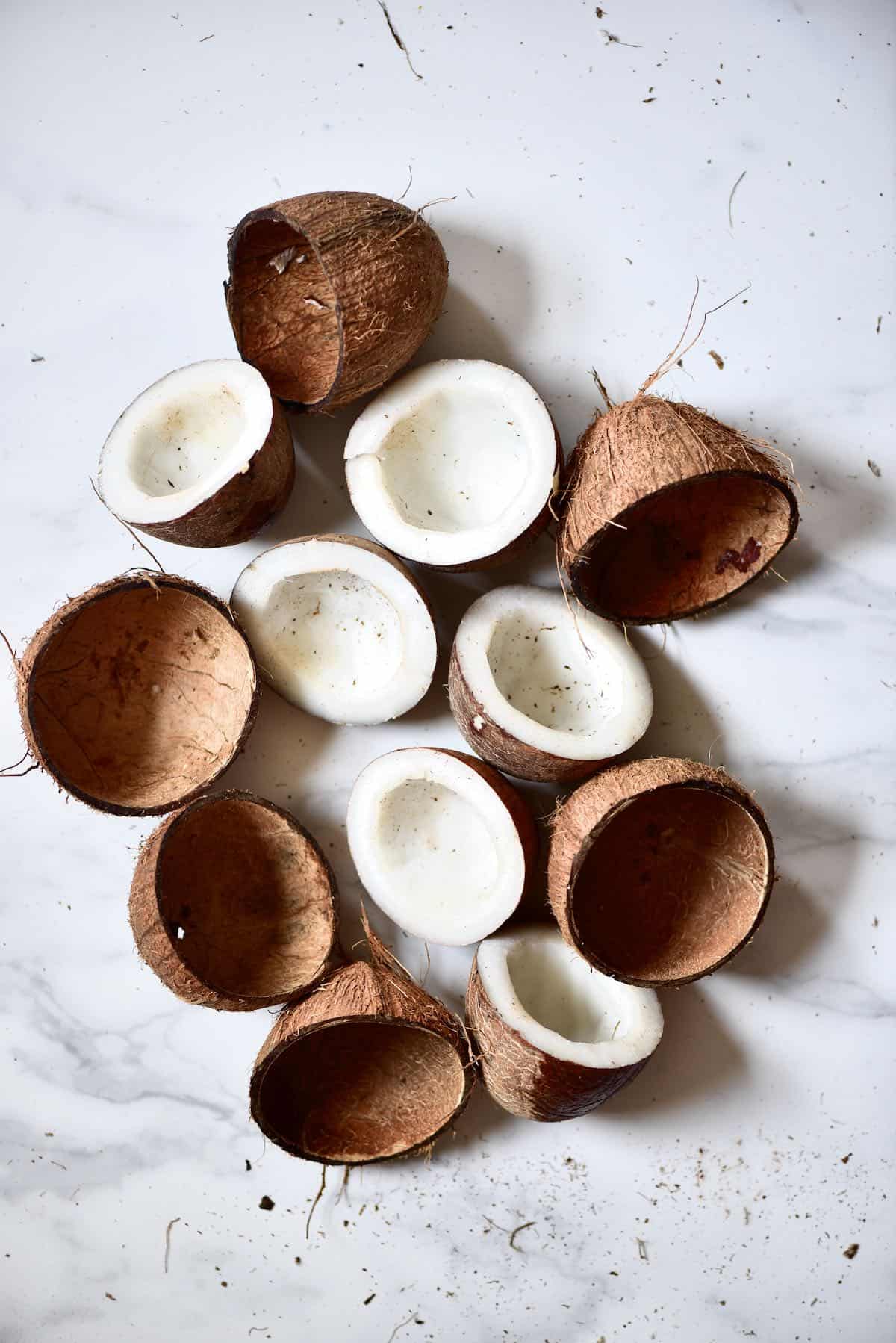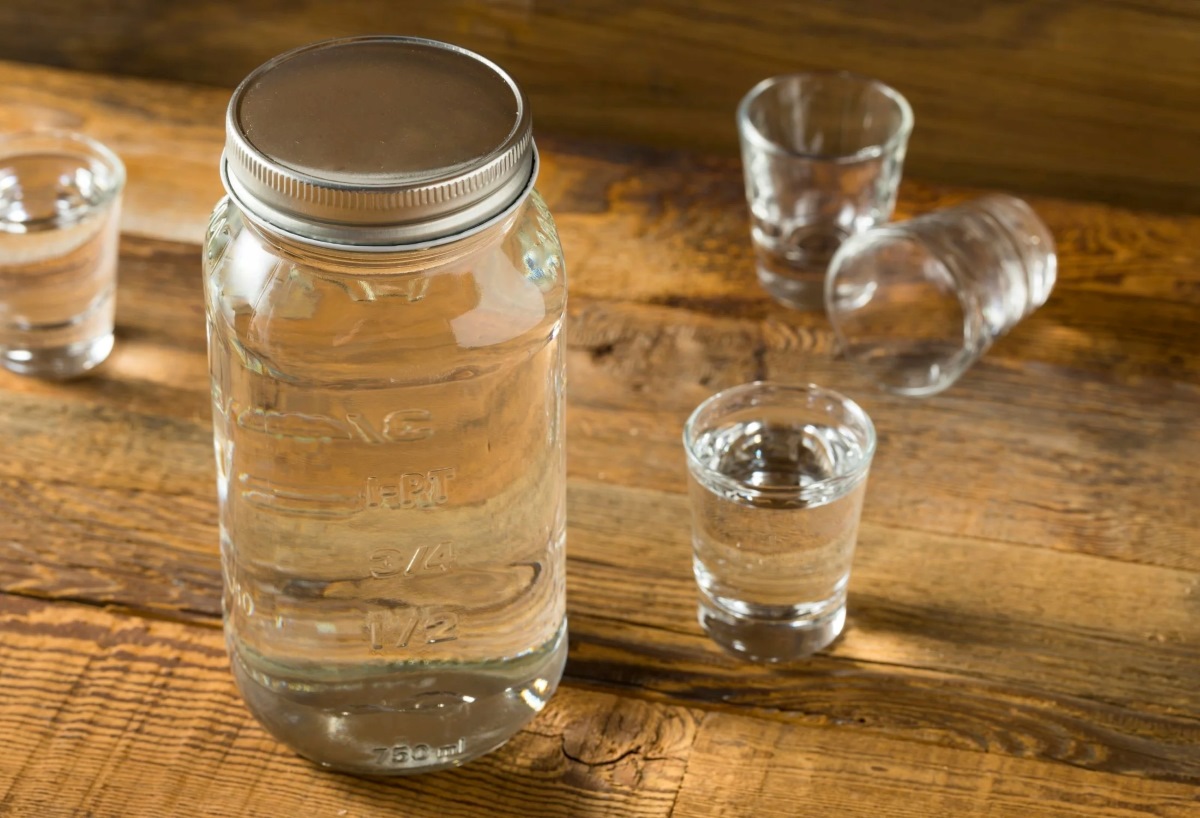

Articles
How To Store Medjool Dates After Opening
Modified: May 6, 2024
Learn the best methods for storing Medjool dates after opening in this informative article. Discover how to keep their freshness and extend their shelf life.
(Many of the links in this article redirect to a specific reviewed product. Your purchase of these products through affiliate links helps to generate commission for Storables.com, at no extra cost. Learn more)
Introduction
Welcome to our guide on how to store Medjool dates after opening. Medjool dates are a delicious and nutritious fruit that can be enjoyed on their own or used as a versatile ingredient in various dishes. However, once you open a package of Medjool dates, it’s important to store them properly to maintain their freshness and quality.
Proper storage is crucial to prevent spoilage and ensure that your Medjool dates remain flavorful and enjoyable for an extended period. In this article, we will walk you through the steps to store Medjool dates effectively, so you can savor their natural sweetness for longer.
Whether you have purchased whole Medjool dates or pitted ones, the storage methods remain the same. So, let’s dive in and discover how to properly store these delectable fruits after opening!
Key Takeaways:
- Properly storing Medjool dates after opening is crucial to maintain their flavor, texture, and nutritional value. Follow the six steps outlined in this guide to ensure your dates remain fresh and delicious for an extended period.
- Whether you choose to refrigerate or freeze your Medjool dates, labeling and maintaining optimal temperature and humidity are key to preserving their quality. Enjoy their natural sweetness and versatility in various recipes while ensuring they stay fresh and flavorful.
Read more: How To Store Dates Once Opened
Importance of Proper Storage
Properly storing Medjool dates after opening is crucial for several reasons. First and foremost, it helps to preserve their taste and texture. Medjool dates have a soft and chewy texture, and when exposed to air and improper storage conditions, they can become dry and lose their natural sweetness. By following the correct storage methods, you can ensure that your dates stay moist, plump, and delicious.
Furthermore, proper storage helps to maintain the nutritional value of Medjool dates. They are packed with essential vitamins, minerals, and fiber, making them a healthy snack option. However, exposure to heat, humidity, and bacteria can degrade their nutritional content over time. By storing them properly, you can preserve their nutritional benefits and enjoy them at their best.
In addition, proper storage helps to prevent spoilage and extends the shelf life of Medjool dates. When stored in the right conditions, they can remain fresh for several months. This is particularly important if you buy bulk quantities or if you don’t consume dates regularly. Proper storage ensures that you can savor your Medjool dates over an extended period without worrying about them going bad.
Lastly, proper storage helps to prevent contamination and the growth of mold or bacteria. Medjool dates are a naturally sweet fruit, which makes them an appealing target for pests. Properly storing them in airtight containers or in the refrigerator helps to keep bugs at bay and maintains the hygiene and safety of the dates.
Now that we understand the importance of proper storage, let’s move on to the steps you should follow to store Medjool dates after opening.
Step 1: Check for Spoilage
Before storing your Medjool dates, it’s essential to inspect them for any signs of spoilage. This step is crucial to ensure that you are storing only fresh and high-quality dates.
Start by examining each date individually. Look for any visible signs of mold, discoloration, or unusual texture. If you notice any soft spots, sliminess, or an off-putting smell, it’s an indication that the dates have spoiled and should not be consumed.
Additionally, check the packaging or container for any signs of damage or tampering. If the package is punctured or torn, it is best to discard the entire batch of dates to avoid any risk of contamination.
Remember, Medjool dates are a perishable fruit, and their shelf life can vary based on various factors. Always rely on your senses and judgment to determine whether the dates are fit for consumption.
If you find any spoiled or damaged dates, remove them from the batch and dispose of them properly. Ensuring that you only store fresh dates will help maintain the quality and flavor of the remaining dates.
Once you have inspected the dates and confirmed their freshness, proceed to the next step: storing them in an airtight container.
Step 2: Store in an Airtight Container
After ensuring that your Medjool dates are free from spoilage, it’s time to transfer them to an airtight container for storage. Airtight containers provide an effective barrier against air, moisture, and pests, helping to keep the dates fresh and protected.
Choose a container that is large enough to hold your desired quantity of Medjool dates without overcrowding them. Glass jars, plastic containers with tight-fitting lids, or resealable bags are all viable options. Whichever container you choose, make sure it is clean, dry, and free from any odors that could transfer to the dates.
If you prefer individual portion sizes, you can use small resealable bags or snack-sized containers. This way, you can easily grab a serving without exposing the rest of the dates to the air unnecessarily.
Once you have your airtight container ready, carefully transfer the Medjool dates into it. Be gentle to avoid squishing or damaging the fruits.
It’s important to note that Medjool dates can be sticky, so you may consider adding a layer of parchment paper or plastic wrap in the container to prevent them from sticking together. This will make it easier to take out individual dates without creating a mess.
Ensure that the container is securely sealed to prevent any air or moisture from entering. This step is crucial because exposure to air can cause the dates to dry out and lose their natural moisture.
Now that your Medjool dates are stored in an airtight container, let’s move on to the next step: deciding whether to refrigerate or freeze them.
Step 3: Refrigerate or Freeze
When it comes to storing Medjool dates after opening, you have the option to either refrigerate or freeze them, depending on your preferences and consumption timeline.
Refrigeration is the most common method of storing opened Medjool dates. It helps to maintain their freshness and prolong their shelf life. Place the airtight container of dates in the refrigerator, preferably in the produce or fruit drawer where the temperature and humidity levels are ideal for preserving their texture and flavor.
Refrigerated Medjool dates can last for several months, but it’s important to note that their texture may become slightly firmer over time. However, the dates will still be delicious and enjoyable.
If you don’t plan on consuming the Medjool dates within a few months, or if you prefer to store them for an extended period, freezing is a great option. Freezing helps to maintain the dates’ quality and prevents them from drying out or spoiling.
Before freezing, divide the Medjool dates into smaller portions if desired. This way, you can easily thaw only the amount you need without exposing the entire batch to temperature changes repeatedly.
Place the portions of Medjool dates in freezer-safe containers or resealable freezer bags, removing as much air as possible before sealing. Label the containers with the date of freezing to keep track of their freshness.
Frozen Medjool dates can last up to a year. When you’re ready to enjoy them, simply transfer the desired amount from the freezer to the refrigerator to thaw. The dates will retain their sweetness and texture, ready to be enjoyed whenever you desire.
Now that you have decided whether to refrigerate or freeze your Medjool dates, it’s time to move on to the next step: labeling and dating the container.
Store opened Medjool dates in an airtight container in the refrigerator to keep them fresh. You can also freeze them for long-term storage.
Read more: How To Store Sauerkraut After Opening
Step 4: Label and Date the Container
Labeling and dating the container may seem like a simple step, but it is essential for keeping track of the freshness of your Medjool dates. By providing clear labeling, you will avoid confusion and ensure that you consume them within a reasonable timeframe.
Start by using a permanent marker or a label to clearly write the date when you opened the package or transferred the dates into the container. This will serve as a reference point to determine how long the dates have been stored.
Additionally, if you have frozen the dates, make sure to write the freezing date on the container. This will help you keep track of how long the dates have been in the freezer.
Labeling the container with the type of dates, especially if you have different varieties, can also be helpful, especially if you may forget which dates are stored inside.
As you consume the Medjool dates, make sure to update the container label by crossing off or updating the date accordingly. This will allow you to monitor the remaining shelf life of the dates.
Having clear labeling on the container will help you identify how long the dates have been stored and make informed decisions about their consumption.
Now that you have labeled and dated the container, let’s move on to the next step: maintaining optimal temperature and humidity.
Step 5: Maintain Optimal Temperature and Humidity
Proper temperature and humidity levels are essential for maintaining the freshness and quality of stored Medjool dates. Following these guidelines will help ensure that your dates remain in optimal condition.
For refrigerated Medjool dates, keep the temperature of your refrigerator between 36°F (2°C) and 40°F (4°C). This temperature range helps to slow down the aging process of the dates, preserving their texture and flavor. It is crucial to store the dates in the produce or fruit drawer, as these areas typically have higher humidity, which helps prevent the dates from drying out.
If you choose to freeze your Medjool dates, it is important to set your freezer temperature to 0°F (-18°C) or below. This temperature will keep the dates frozen solid and prevent any potential freezer burn.
Along with maintaining the appropriate temperature, it’s also important to control humidity levels. Excessive humidity can lead to the growth of mold or bacteria, while low humidity can cause the dates to dry out. The ideal humidity range for storing Medjool dates is around 30-40%.
If you live in a humid climate, using moisture-absorbent packets or placing a small piece of bread in the container can help absorb excess moisture and prevent the dates from becoming sticky or moldy. On the other hand, if you live in a dry climate, you may consider adding a small dish of water inside the container to increase humidity slightly.
By maintaining the proper temperature and humidity levels, you can ensure that your Medjool dates stay fresh and delicious for an extended period.
Now that you know how to maintain optimal temperature and humidity, let’s move on to the final step: using your stored dates within a reasonable timeframe.
Step 6: Use within a Reasonable Timeframe
While Medjool dates can be stored for an extended period, it’s important to remember that they are a perishable fruit. To enjoy the best quality and flavor, it’s recommended to consume them within a reasonable timeframe.
Refrigerated Medjool dates can typically be enjoyed for up to 6 months. However, keep in mind that their texture may become slightly firmer over time. If you notice any signs of spoilage, such as an off smell or mold, discard them immediately.
Frozen Medjool dates can be kept for up to a year without significant loss of quality. However, it’s always a good idea to consume them within a reasonable timeframe to ensure optimal taste and texture.
When using your stored Medjool dates, take out the desired quantity and allow them to come to room temperature before consuming. This will help them to regain their natural softness and sweetness.
Remember that Medjool dates are incredibly versatile and can be used in a wide range of recipes, including smoothies, desserts, salads, and savory dishes. Get creative and explore different ways to incorporate these delicious fruits into your meals.
Finally, as you use your stored dates, continue to monitor their freshness. If you notice any signs of spoilage, it’s safer to discard the remaining dates to avoid consuming potentially harmful food.
By following this six-step guide, you can effectively store and enjoy your Medjool dates after opening, ensuring that they remain fresh, delicious, and ready to enhance your culinary creations.
Now that you have mastered the art of storing Medjool dates, you can confidently enjoy their natural sweetness and nutritional benefits for an extended period of time.
Happy storing and savoring!
Conclusion
Properly storing Medjool dates after opening is essential to maintain their freshness, taste, and nutritional value. By following the six steps outlined in this guide, you can ensure that your Medjool dates remain delicious and enjoyable for an extended period of time.
First, check for any signs of spoilage before storing the dates. Remove any damaged or spoiled dates to preserve the quality of the rest. Then, transfer the dates to an airtight container to protect them from air, moisture, and pests.
Decide whether to refrigerate or freeze the dates based on your preferences and consumption timeline. Refrigeration is a common method that helps retain the freshness and texture of the dates for several months. Freezing, on the other hand, allows for longer-term storage, maintaining the quality for up to a year.
Label and date the container to keep track of the freshness of your Medjool dates. Clear labeling ensures you consume them within a reasonable timeframe and helps avoid confusion about their storage duration.
Maintaining optimal temperature and humidity is crucial to preserving the dates’ flavor and texture. Refrigerate the dates at a temperature between 36°F (2°C) and 40°F (4°C) with a humidity level of around 30-40%. For freezing, set your freezer at 0°F (-18°C) or below.
Lastly, use your stored Medjool dates within a reasonable timeframe to enjoy their best quality. Remember to allow refrigerated dates to come to room temperature before consuming, and discard any spoiled dates to ensure food safety.
By following these steps, you can maximize the shelf life of your Medjool dates while preserving their taste, texture, and nutritional benefits. Whether you enjoy them as a healthy snack or use them as a versatile ingredient in various recipes, properly stored Medjool dates will always enhance your culinary experience.
Now that you have the knowledge and techniques for storing Medjool dates, go ahead and enjoy their luscious sweetness for as long as possible!
Now that you've learned how to keep Medjool dates fresh, why stop there? Proper storage extends beyond just fruits. If you enjoy sipping on quality coffee, maintaining its freshness is key. Our next piece provides a rundown on securing your beans’ flavor and aroma with the best airtight containers available for 2024. Ensuring your morning cup remains robust and invigorating has never been easier.
Frequently Asked Questions about How To Store Medjool Dates After Opening
Was this page helpful?
At Storables.com, we guarantee accurate and reliable information. Our content, validated by Expert Board Contributors, is crafted following stringent Editorial Policies. We're committed to providing you with well-researched, expert-backed insights for all your informational needs.















0 thoughts on “How To Store Medjool Dates After Opening”